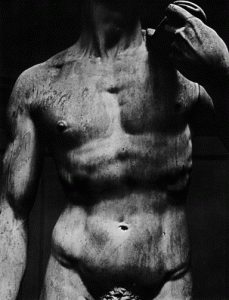
Moving from the Core
 On Saturday I was lucky enough to attend a workshop on the fundamentals of Lindy Hop, run by the inspiring Shane McCarthy of Swing It! It was about how to lead movement from the core of our bodies, rather than from our limbs. How we should be travelling (in whatever direction) by keeping our centres over our legs, driving our momentum by pushing away from the ground, and not letting our bodies lag behind our feet.
On Saturday I was lucky enough to attend a workshop on the fundamentals of Lindy Hop, run by the inspiring Shane McCarthy of Swing It! It was about how to lead movement from the core of our bodies, rather than from our limbs. How we should be travelling (in whatever direction) by keeping our centres over our legs, driving our momentum by pushing away from the ground, and not letting our bodies lag behind our feet.
Shane explained the concept perfectly in his workshop – unfortunately my synopsis does not do it justice here. Suffice to say, it is something I have been struggling to apply to my dancing since I started learning just over a year ago, and need to be mindful of.
In the early hours of Sunday morning, snug and inconveniently awake in bed, I was thinking about this concept in relation to something else I’ve been grappling with lately: trying to write a novel (hence the blog hiatus). Figuring that the only way to learn is by doing (and making lots of mistakes), I started on this marathon project last year, slowly scribbling away at the scenes I had carefully mapped out. It is every bit as difficult as I expected it to be – no surprises there.
Starfished in bed, I was reflecting on some writing tips Stephen King provides in his book On Writing: A Memoir, and on which most successful writers seem to agree: that the best stories are character-driven. If the central character(s) grows, they start to influence the course of the story, instead of the other way around. It should be the desires and decisions of the character(s) that propel the story forwards, not a pre-determined series of events (aka plotting). In other words, a good story is driven from its core – the central character.
character(s) grows, they start to influence the course of the story, instead of the other way around. It should be the desires and decisions of the character(s) that propel the story forwards, not a pre-determined series of events (aka plotting). In other words, a good story is driven from its core – the central character.
I realised that in writing my first draft, I’ve made the fundamental mistake of getting too caught up in the ‘limbs’ of the story – trying to move it forward by using creative descriptions, twists and sub-plots, with splatterings of dialogue. In doing so I have lost sight of what should be moving it along: the main character, its core. I need to get back to the guts of the story, and work from the inside out. Which reminds me how vast the chasm sometimes is between knowing how to do something and being able to do it.
But I like this ‘moving from the core’ as a guiding philosophy. Often it’s easy to become distracted by what’s on the outside – the glossiness of life, social expectations, worrying about what other people think of us, or how we think we should be rather than what we are. In focussing on this myriad of external concerns, we neglect what is at the core of our being, the values that are important to us and that should be guiding our choices. I like the idea of moving forwards from our centres, deciding with our guts, and working from the inside out.
As for the writing, it’s back to the drawing board for me.
Unpacking paraphilias
Following on from the previous post, I was curious to find out how prevalent paraphilias are amongst the general adult population. Not surprisingly, there is scant evidence on this although conservative estimates range from 10% to 15%.[1] There is no evidence on the percentage of men compared to women who have a paraphilia. Anecdotally, it seems that men are more likely to have paraphilic tendencies than women, but this could be due to the greater prominence of men in kinky subcultures, and in sexual activities that have criminal consequences (such as paedophilia). Women with paraphilic behaviours may be more likely to keep them as solo fantasies, but of course this is just speculation.
The American Psychiatric Association estimates that 50% of participants in paraphilic activities are  married. A cynic would say this is because it helps alleviate the boredom of married life. Another view is that people in stable, long-term relationships may be more willing to share their unusual sexual practices with their partner. An unanswered question is whether the percentage of people engaging in paraphilic activities has increased in modern times, as evidenced by the huge array of material on the internet, or whether it is just that paraphilias that were previously kept secret have now become more visible, less taboo, and easier to engage in with the internet.
married. A cynic would say this is because it helps alleviate the boredom of married life. Another view is that people in stable, long-term relationships may be more willing to share their unusual sexual practices with their partner. An unanswered question is whether the percentage of people engaging in paraphilic activities has increased in modern times, as evidenced by the huge array of material on the internet, or whether it is just that paraphilias that were previously kept secret have now become more visible, less taboo, and easier to engage in with the internet.
The answers to these questions also depend on what definition of ‘paraphilia’ is used. For example, according to the current edition of the Diagnostic and Statistical Manual of Mental Disorders (‘DSM’ 2000, published by the American Psychiatric Association), a paraphilia is a condition “characterised by recurrent, intense sexual urges, fantasies, or behaviours that involve unusual objects, activities or situations”. More common ones include voyeurism, exhibitionism, paedophilia, sadism, masochism, fetishism (sexual arousal from inanimate objects such as women’s shoes), transvestic fetishism (fantasies involving cross-dressing), and frotteurism (touching and rubbing a non-consenting person, often in crowded public places).
One could query how ‘unusual’ some of these activities really are. Given the ready availability of internet porn and the phenomenal popularity of books such as E.L. James’ 2011 best-seller Fifty Shades of Grey, perhaps some of these paraphilias have become more mainstream and no longer warrant their classification as such. Indeed, it wasn’t until 1986 that homosexuality was removed from the list of recognised paraphilias in the DSM, which shows that cultural perspectives of what is ‘unusual’ can change over time.
 The ancient Greeks, for example, not only tolerated but also encouraged the love of adolescent boys by older men. Today this would be considered paedophilia. In ancient Buddhist literature, there are references to paraphilic practices including bestiality (sexual contact with animals), necrophilia (sexual interest in corpses) and fetishism among the monastic community over two-and-a-half thousand years ago. Sexual sadism and masochism have also existed for many centuries, long before the graphic novels of the Marquis de Sade (Donatien Alphonse Francois, 1740-1814) and Leopold von Sacher-Masoch (1836-1895) after whom sadism and masochism are respectively named (both men were infamously committed to asylums for significant periods of their lives as a result of their sexual activities and publications).
The ancient Greeks, for example, not only tolerated but also encouraged the love of adolescent boys by older men. Today this would be considered paedophilia. In ancient Buddhist literature, there are references to paraphilic practices including bestiality (sexual contact with animals), necrophilia (sexual interest in corpses) and fetishism among the monastic community over two-and-a-half thousand years ago. Sexual sadism and masochism have also existed for many centuries, long before the graphic novels of the Marquis de Sade (Donatien Alphonse Francois, 1740-1814) and Leopold von Sacher-Masoch (1836-1895) after whom sadism and masochism are respectively named (both men were infamously committed to asylums for significant periods of their lives as a result of their sexual activities and publications).
In the clinical literature, paraphilias were being discussed extensively by the second half of the 19th century. In Richard von Krafft-Ebing’s 1887 Psychopathia Sexualis, the neuro-psychiatrist detailed numerous sexual case studies involving fetishism, flagellation, sadism, lust-murder, necrophilia, masochism, exhibitionism, bondage, paedophilia, sodomy, bestiality, and incest. Indeed, in Victorian London there was a flourishing network of brothels that specialised in flagellation for those wishing to give or receive punishment, and Victorian pornography was full of images depicting sadism and masochism.
One of Krafft-Ebing’s case studies concerned a man who, since the age of 12, had a fetish for women’s handkerchiefs and would orgasm at the sight of one. Another case involved a 20 year-old man who was caught having intercourse with a hen. The village hens had been dying one after another, and the man causing the mysterious deaths had been wanted by local authorities for some time. When asked by the judge as to the reason for such an act, the man said that his genitals were so small that intercourse with a woman was impossible!
In 1947 a psychologist reported an adolescent male who had a strong fetishistic interest in car exhaust pipes, while a man who had a fetish for sneezing has also been the subject of a psychological study. It seems that pretty much any object or activity one can think of has been the subject of a fetish for at least one individual. In 1990 a psychologist at John Hopkins University and Hospital reported a case study involving a 42 year-old married woman who had the amputee paraphilia (acrotomophilia) since childhood. The woman experienced great sexual excitement in seeing the stump of an amputated limb, to the extent that she considered becoming an amputee herself.[2]
However, there is an important distinction between paraphilias on the one hand, and the non-pathological  use of fantasies and objects to stimulate sexual excitement, on the other. A paraphilia is considered pathological when it becomes the sole focus of sex, is the only way a person can experience sexual arousal, and when the person’s behaviour causes problems with normal functioning in daily life. Some people with paraphilias – and particularly the more obscure ones, like the woman with the amputee fetish – often experience it as a burden and have feelings of isolation, depression and guilt. Sometimes it prevents them from ever having a satisfying sexual relationship, especially with a partner.
use of fantasies and objects to stimulate sexual excitement, on the other. A paraphilia is considered pathological when it becomes the sole focus of sex, is the only way a person can experience sexual arousal, and when the person’s behaviour causes problems with normal functioning in daily life. Some people with paraphilias – and particularly the more obscure ones, like the woman with the amputee fetish – often experience it as a burden and have feelings of isolation, depression and guilt. Sometimes it prevents them from ever having a satisfying sexual relationship, especially with a partner.
There are several contesting theories about the causes of paraphilias. One study found that amongst heterosexual males, those with high paraphilic tendencies had a significantly greater number of older brothers and were more likely to be left-handed – two established correlates of male homosexuality related to the hormones involved in prenatal neuro-development.[3] The authors of this study suggest that the development of paraphilias may involve an in utero biological component.
Others dispute this finding and claim that there is no obvious neural or biological basis for paraphilic behaviour. Rather, the causes are thought to be more psychological than biological, although individual physiological differences may help reinforce paraphilic activities through the creation of neural pathways. Most paraphilias seem to be established before puberty, while learned behaviour is still flexible and before neural synapses have completed their last major step of maturation.
 Psychoanalysts such as Robert Stoller theorise that a paraphilia is the result of a traumatic childhood event that is relieved and overcome by achieving orgasm.[4] According to Stoller, “the fantasy picks out the moment of greatest trauma for what is now its moment of greatest thrill”. For example, in another case study reported by John Hopkins University, a woman had experienced sexual arousal by physically handicapped men (abasiophilia) since she was 12 years old. She believed her paraphilia was directly attributal to childhood events – a period when both she and her father were incapacitated on crutches, with her father dying of a heart attack shortly afterwards. The ‘trauma in childhood’ theory has a degree of explanatory power, although it made me wonder why a traumatic childhood event manifests itself as a paraphilia for one person but not for another? No one seems to know the answer to this question.
Psychoanalysts such as Robert Stoller theorise that a paraphilia is the result of a traumatic childhood event that is relieved and overcome by achieving orgasm.[4] According to Stoller, “the fantasy picks out the moment of greatest trauma for what is now its moment of greatest thrill”. For example, in another case study reported by John Hopkins University, a woman had experienced sexual arousal by physically handicapped men (abasiophilia) since she was 12 years old. She believed her paraphilia was directly attributal to childhood events – a period when both she and her father were incapacitated on crutches, with her father dying of a heart attack shortly afterwards. The ‘trauma in childhood’ theory has a degree of explanatory power, although it made me wonder why a traumatic childhood event manifests itself as a paraphilia for one person but not for another? No one seems to know the answer to this question.
Other psychoanalysts[5] have suggested that some paraphilias such as feederism and masochism may be explained by the ‘Escape from Self Theory’. According to Baumeister’s ‘Escape from Self Theory’[6], the emphasis in Western culture on the autonomous self can sometimes be a burden, resulting in a desire to escape from the oppressive aspects of self. Baumeister argued that this could be achieved through sexual masochism because such acts involve a complete loss of power and control, which are inconsistent with the maintenance of normal modern identity and responsibility. Therefore some sexual practices may represent an appealing form of freedom and escape from the pressures of daily life.
Personally, I like the observation by Dr Fred Berlin, a leader in the study and treatment of sexual disorders, that “people don’t decide the nature of their sexual desires, they discover them.” If you’re interested in delving deeper into this subject, Daniel Bergner’s book The Other Side of Desire could be the way to go. I think that this inner space, the nature of desire, is far more fascinating than exploring outer space. The dark and secret terrain of the human mind is a universe unto itself.
[1] G Brame, Come Hither: A commonsense guide to kinky sex, (2000), New York, Simon & Schuster.
/
[2] John Money, Paraphilia in Females, Journal of Psychology and Human Sexuality, (1991), 3:2, 165-172.
[3] Qazi Rahman, Deano Symeonides, ‘Neurodevelopmental Correlates of Paraphilic Sexual Interests in Men, Archive of Sexual Behaviour, (2008) 37:166-172.
[4] Robert Stoller, Perversion: the Erotic Form of Hatred, 1975, Pantheon Books, New York.
[5] Lesley Terry, Paul Vasey, Feedersim in a Woman, Archive of Sexual Behaviour, (2011), 40:639-645.
[6] Roy Baumeister, Masochism as escape from self, Journal of Sex Research, (1988), 25, 28-59.
Paraphilias in Popular Culture
Paraphilias – that is, sexual attractions (‘philia’) to things outside the normal range (‘para’) – are seeping into popular culture in a disarming way. Have you heard of ‘plushies’, ‘looners’ and ‘feeders’? I hadn’t either until relatively recently, while watching a couple of TV shows.
 In season three of the endearingly quirky HBO series Bored to Death, the main character, private investigator Jonathan Ames (played by Jason Schwartzman), takes on a case involving unfaithful plushies. In the episode, Jonathan spies on a woman having sex with a guy in a tiger suit – a hilarious and absurd situation. Not knowing whether or not this was something made up for the show, I googled it and discovered that plushophilia is a sexual fetish for stuffed toys or for having sex with people dressed in animal suits – apparently part of the ‘furry subculture’. Given plush toys didn’t exist until recent times (except for teddy bears, which have been around for over a hundred years) it made me wonder, how do these paraphilias arise? Are they an inherent part of a person’s psyche, or do they develop in response to environmental cues? Or is it a combination of both?
In season three of the endearingly quirky HBO series Bored to Death, the main character, private investigator Jonathan Ames (played by Jason Schwartzman), takes on a case involving unfaithful plushies. In the episode, Jonathan spies on a woman having sex with a guy in a tiger suit – a hilarious and absurd situation. Not knowing whether or not this was something made up for the show, I googled it and discovered that plushophilia is a sexual fetish for stuffed toys or for having sex with people dressed in animal suits – apparently part of the ‘furry subculture’. Given plush toys didn’t exist until recent times (except for teddy bears, which have been around for over a hundred years) it made me wonder, how do these paraphilias arise? Are they an inherent part of a person’s psyche, or do they develop in response to environmental cues? Or is it a combination of both?
Perhaps you’ve heard of ‘looners’? I hadn’t until watching season two of The United States of Tara, a  comedy-drama series starring Toni Collette as a woman with a multiple personality disorder. In one episode, her teenage daughter Kate films herself doing ‘favours’ for internet admirers to buy things on her wish-list. One of her online admirers is a looner – a guy with a balloon fetish – for whom she blows up and sits on balloons in exchange for a Vespa. Apparently looners categorise themselves as either ‘poppers’ (those for whom the bursting of the balloon is crucial for their sexual gratification) or ‘non-poppers’ (those who have a phobia of balloons bursting). Interesting stuff.
comedy-drama series starring Toni Collette as a woman with a multiple personality disorder. In one episode, her teenage daughter Kate films herself doing ‘favours’ for internet admirers to buy things on her wish-list. One of her online admirers is a looner – a guy with a balloon fetish – for whom she blows up and sits on balloons in exchange for a Vespa. Apparently looners categorise themselves as either ‘poppers’ (those for whom the bursting of the balloon is crucial for their sexual gratification) or ‘non-poppers’ (those who have a phobia of balloons bursting). Interesting stuff.
Another example of a seemingly innocuous paraphilia creeping into popular culture can be found in the gorgeously funny 2009 film City Island (starring Andy Garcia and Julianna Margulies). The film is about the dysfunctional Rizzo family in which everyone maintains a secret life. The teenage son Vinnie has a feeder fetish involving a 24-hour webcam and a morbidly obese neighbour – a relationship that is portrayed in a remarkably endearing way.
For the uninitiated, Feederism is a fat fetish in which people eroticize feeding and weight gain. ‘Feeders’ are individuals who gain sexual pleasure from feeding others and encouraging them to gain weight, while ‘gainers’ are individuals who receive sexual gratification from being fed and becoming obese, sometimes to the point of immobility. Feederism is more common among heterosexuals, where men are the feeders and women the gainers. Participation in the feeder community is mostly through the internet, with people using online chat forums and webcams.
 In around 2010, a 300 kg New Jersey woman, Donna Simpson, was involved in the feeder community and attempted to become the Guinness Book of Records’ most obese woman. People paid money to the 44 year old mother of two via her website to watch her eat. One person from Germany sent her credit cards with instructions to order take-away, while another from California wired her $200 a week to buy groceries and would call to hear what she bought. She said that the people who paid to watch her eat weren’t ‘toothless trolls’ but often lawyers, accountants or college students who had a fat fetish.
In around 2010, a 300 kg New Jersey woman, Donna Simpson, was involved in the feeder community and attempted to become the Guinness Book of Records’ most obese woman. People paid money to the 44 year old mother of two via her website to watch her eat. One person from Germany sent her credit cards with instructions to order take-away, while another from California wired her $200 a week to buy groceries and would call to hear what she bought. She said that the people who paid to watch her eat weren’t ‘toothless trolls’ but often lawyers, accountants or college students who had a fat fetish.
Remarkably, two years ago Donna Simpson embarked on a journey to lose the weight and live a healthier life. ‘I realised that I was their fantasy,’ she said of her viewers who paid her to consume more food, and that ‘what it comes down to is that you become a slave to the food and to your feeder.’ In an interview with the UK’s Daily Mail, she admitted to using crack cocaine to try to shed the kilos, but ‘all it did was make me clean my house really, really fast’, she said. It seems that at least in the case of feederism, a person’s paraphilic tendencies may change over time.
While researching this topic, I stumbled across a website called Dimensions Magazine, an online forum for feeders and gainers. Browsing one of the threads in the forum, I discovered (and wish I hadn’t) there is a fetish for ‘squashing’. Apparently wearing goggles or a snorkel can help prolong the experience, especially for first-timers. I’ll say no more, except that the human mind can be fascinatingly disgusting.
It also made me wonder whether paraphilias such as feederism have only evolved in modern times, because they are facilitated by the internet, or whether they have existed for centuries and were fulfilled in a different manner? One can almost imagine an obese woman during Victorian times being maintained, like a queen bee in an opulent London parlour, by her wealthy benefactor who had a fat fetish. How would we ever know?
In the next installment of this post, I’ll attempt to answer some of the questions posed above, discussing the prevalence of paraphilias, theories about the causes, and citing some unusual case studies involving chickens and car exhaust pipes. Stay tuned!
Three taxis
Over the past week I have been blessed with some wonderful insights from three taxi drivers…
The first conversation was with a Chilean man in his 50s, a former mining engineer who moved to Sydney 15 years ago. He fretted that his new car smelled of vomit (I assured him I hadn’t noticed). He rarely worked weekends, but had decided to on the previous one. A drunk woman had thrown-up on the front seat, yet he wasn’t bitter about his new car being tainted. “It happens”, was all he said. What good grace! He told me how he sought engineering work in Western Australia’s mines when he first moved here, how employers considered him too old, and so he became a taxi driver. The man expressed his gratitude at the opportunities life in Australia has given him and his family. With his daughter now 17, he and his wife are hoping to adopt or sponsor a young child to provide someone else with a positive start in life. I realised two things from my conversation with this kind man. One is that most Australians don’t seem to appreciate how very fortunate we are, by mere accident of birth, to be in this bountiful country. The other is how humbling and inspiring the generosity of the human spirit can be.
My second encounter was with an Ethiopian man, who I learned had not seen his mother and family in Ethiopia for twenty years. Since seeking refuge in Australia, the Ethiopian government refused him entry back into his home country, and the Australian government would not grant his mother a travel visa (on the grounds that she was unlikely to leave) to visit him in Melbourne. He told me of his dream to save enough money to pay for an immigration lawyer to help bring his mother here. “Insha’Allah” he said, if it is God’s will. I deeply appreciated that important reminder – we can only do our best in life with the things that are within our control. So much is beyond that, and sometimes our only chance of happiness is to accept our circumstances. God willing. Let it be. I hope this calm man will be reunited with his mother one day.
My third conversation was with a young Indian man living in Melbourne whose fiancée, an Australian citizen from India, lives in Sydney. I asked whether it was an arranged marriage. “Ooh yes”, he replied. “Our families conducted all the background checks to ensure we are compatible. They made sure we share the same values, level of education, and that I have financial security.” I was curious whether he thought this was a better system than marrying for romantic love, and whether he was happy with his family’s arrangements. I probed further. “Well,” he said, “before this I was with a girl who I was very much in love with for 8 years. It ended badly and now we are not even on speaking terms.” He paused to reflect. “But this way – well at least I know we are suitable for one another. And besides, after living with someone for a few years, eventually you grow to love them.” I liked the apparent simplicity of, and faith in, this approach. Maybe when it comes to choosing a life partner, the Western obsession with romantic love isn’t everything it’s fired up to be.
I am grateful to these drivers for sharing their stories and enriching my life, and for reminding me how lucky I am.
Mr Hamble
It was only the smell of freshly poured concrete, warm bitumen and humming construction sites that lured Mr Hamble away from his desk at Plim & Co chartered accountants each day. As soon as the clock struck one, he would take his ham and pickle sandwich (on white bread) and a packet of prunes (on Dr Cunningham’s advice) from his satchel and wander down to the Ruddle Street bridge.
The magnificent steel bridge straddled the Eugene River, whose mucky waters lapped at the stone embankment flanking its course. Beyond the bridge Mr Hamble could see the flock of cranes populating the city skyline, delivering dangling bundles of pipes and steel to the pigeon holes of skeletal skyscraper frames. His skin tingled with excitement as he hurried across the bridge.
Mr Hamble’s round shiny face tilted upwards as he surged towards his latest interest, his quivering nostrils leading the way like an excited beagle relentlessly pursuing a new scent. Ever since he was small Edward Hamble dreamed of becoming an architect, and his fascination with buildings flourished as he grew. But his father’s sturdy advice bore down on him like hard rain until Edward’s youthful passion became nothing more than a wet sludge. One day, in his final year of school, Edward succumbed to his father’s wishes and agreed to enrol in accounting college. “There’s safety in numbers”, his father used to say, and Edward Hamble reluctantly realised the truth of those words.
His latest affair involved the Paragon development, an industrious clay pit that would soon embrace the foundations of a sixty storey office tower. The Paragon building, according to the artist’s impression on the sign, looked like a colossal shard of glass piercing the sky in an otherwise innocuous street scape. Mr Hamble wondered why the people depicted in the artist’s impression didn’t have any faces. Maybe that’s what impressions were all about.
He assumed his lunchtime residence on the wooden bench in the park across the street. This provided a comfortable vantage point from which to survey the activities of the cacophonous construction site. Mr Hamble unwrapped his sandwich and expertly manoeuvred it as he chewed around the edges to avoid any pickle spillage. He watched a bulldozer gnawing at the enormous cavity in the ground, and noticed in the far corner of the site a majestic oak tree. It was imprisoned by a round of cyclone fencing, the tips of its roots visible in the cross-section of excavated earth. The ancient oak appeared resolute in its position amongst the chaos, the solemn magnificence of a hundred year’s growth holding steadfast against the encroaching bulldozers and cement trucks.
Mr Hamble suddenly felt his plump heart sink into his stomach, like a ball of donut dough dropping into a vat of hot oil. For once it wasn’t indigestion. Mr Hamble’s heart had sunk upon seeing that the bulldozer was now trundling straight towards the oak tree, and that the tree was quivering in silent terror…
Cabbage drop
Sleep spindles
 I have often wondered why some people have no difficulty falling asleep on a plane or bus, maintaining their blissful slumber impervious to light, noise and movement, whereas others will be woken by the squeak of a mouse or a toilet flushing, and are highly sensitive to light and other disturbances. Unfortunately, I happen to be on the extreme end of the light sleeper spectrum and depend on being hermetically sealed with my eye mask and ear plugs, in a dark and quiet room, for any hope of falling and staying asleep.
I have often wondered why some people have no difficulty falling asleep on a plane or bus, maintaining their blissful slumber impervious to light, noise and movement, whereas others will be woken by the squeak of a mouse or a toilet flushing, and are highly sensitive to light and other disturbances. Unfortunately, I happen to be on the extreme end of the light sleeper spectrum and depend on being hermetically sealed with my eye mask and ear plugs, in a dark and quiet room, for any hope of falling and staying asleep.
This is highly inconvenient, especially living in a terraced house in the inner city, where noisy neighbours and frequent traffic are all part of the otherwise fantastic lifesyle. Without a doubt, if there was one thing I could change about myself it would be to become a heavy sleeper.
In a quest to overcome this trait, I’ve tried hypnotherapy, mindfulness meditation, listening to calm music, lavender drops, warm milk and reading until I’m exhausted. But the reality is, if it’s not dark and deathly quiet, I simply don’t fall asleep.
My annoying idiosyncrasy has also had unforeseen consequences. Like the time I went on holiday to Byron Bay and diligently packed my ear plugs and an unused eye mask which I’d squirreled away after a long haul flight. I awoke the first morning to find my face swollen with a pink allergic rash from the dye in the eye mask, which had mixed with my sweat during the hot humid night. I looked like a sick raccoon and spent the rest of the holiday on antihistamines and hiding behind oversized sunglasses. Not fun, or pretty.
But now I have the answer to the question I have pondered all my life. Scientists at the Harvard Medical School, led by neurologist Dr Jeffrey Ellenbogen, have discovered why some people’s brains are better than others at blocking out environmental stimuli during sleep. Ellenbogen and his team recorded the brainwaves of people who reported being heavy sleepers as they were subjected to different noises at increasing volumes. Ellenbogen paid particular attention to the patterns produced by the thalamus, the area of the brain that modulates incoming auditory and visual stimuli. He found that the number of pulses, or sleep spindles, produced by the thalamus varied among the sleepers. Those with the highest number of spindles were the heaviest sleepers and slept through more noises than those with fewer spindles.
Scientists are not sure why some people generate more sleep spindles than others, but they suspect it may be genetic. Dr Ellenbogen hopes that future research will lead to drugs or other therapies that can increase the number of sleep spindles so that light sleepers become better at blocking out external stimuli. I really hope they achieve their mission. Until then, my eye mask, ear plugs and the occasional sleeping pill will continue to be my lifesavers.
What’s your word?
I love learning new words, especially ones from other languages that have no equivalent in English. For all the brilliant specificity of the English language, there is still so much it fails to capture and convey. Here are a few of my current favourites:
Schnorrer: a Yiddish word for someone who’s a sponger or freeloader. Sometimes it’s used as a backhanded compliment for a person whose chutzpah and cleverness enables them to obtain things for free.
Kummerspeck: this German word literally means ‘grief bacon’ and refers to the weight gained from emotional over-eating, say from indulging in too much choc chip ice-cream after a bad break-up.
Torschlusspanik: another German gem which refers to the fear of diminishing opportunities as one gets older, literally ‘gate-closing panic’. Fortieth birthdays are often a trigger.
Toska: Vladimir Nabokov described it best: “At its deepest and most painful, it is a sensation of great spiritual anguish, often without any specific cause. At less morbid levels it is a dull ache of the soul, a longing with nothing to long for, a sick pining, a vague restlessness, mental throes, yearning. In particular cases it may be the desire for somebody of something specific, nostalgia, love-sickness. At the lowest level it grades into ennui, boredom.”
Bakku-shan: a Japanese term for the experience of seeing a woman who appears attractive from behind but not from the front, like Tori Spelling.
Desenrascanco: a Portuguese word for pulling a MacGyver, getting yourself out of a sticky situation at the last minute. The story of Aron Ralston, the mountain climber who was trapped by a boulder in Utah and cut off his own arm to escape, springs to mind.
Esprit d’escalier: French for when you think of the perfect verbal comeback… far too late. Literally ‘the wit of the staircase’, meaning you couldn’t think of anything clever until walking down the stairs after the event.
I am looking for a word that describes the unbearable (although not physically painful) sensation one experiences when hearing fingernails scratching on a blackboard. Touching certain synthetic fabrics, such as car seat upholstery and imitation silk, gives me that same unbearably freakish feeling. I once knew a girl who got the same response from squeaking icing sugar between her fingers. Are there other things that make people feel that way? Does anyone have a word for it? Fill me in.


